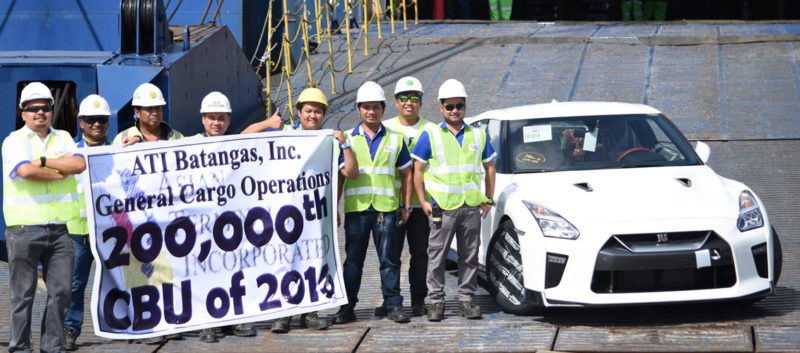

Batangas Port, two hours south of Philippine capital Manila, capped 2016 with a record-breaking performance, handling over 200,000 completely built imported car units (CBUs) for its highest car throughput in a single year.
This represents a year-on-year volume growth of over 40%, driven by the country’s booming consumer demand, port operator Asian Terminals Inc. (ATI) said in a statement.
Batangas Port welcomed its 200,000th CBU, a Nissan GT-R sports coupe, on December 28, shipped aboard Positive Passion, a car carrier vessel operated by Eastern Car Liner through its local agent Wallem Philippines Shipping, Inc.
ATI said Batangas Port accounts for most of the country’s annual car imports, due largely to the convenience, efficiency, and proximity it offers to the major car manufacturers, importers, and distributors based in Calabarzon (Cavite, Laguna, Batangas, Rizal, and Quezon).
In support of the industry’s rapid growth, ATI is investing in a state-of-the-art multilevel CBU storage facility (MCSF) within Batangas Port in order to nearly double the port’s storage capacity.
Fully operational by early 2018, the MCSF will allow South Luzon’s international gateway port to handle over 7,000 imported vehicles at a time.
The new record for CBUs at Batangas port followed another milestone for ATI when its Manila South Harbor operations breached the mark for 1 million twenty-foot equivalent units in throughput for the first time in a single year, achieved at a record production pace.




